- Home
- TV History
- Network Studios History
- Cameras
- Archives
- Viewseum
- About / Comments
Skip to content
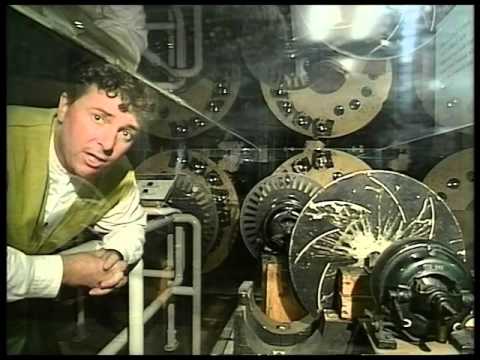
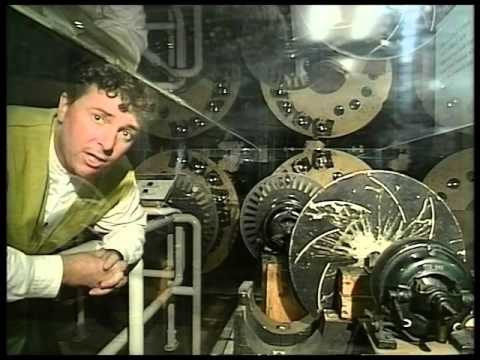
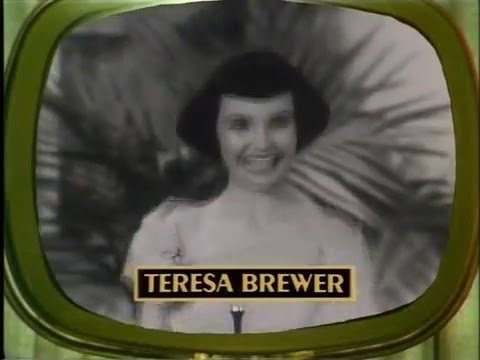
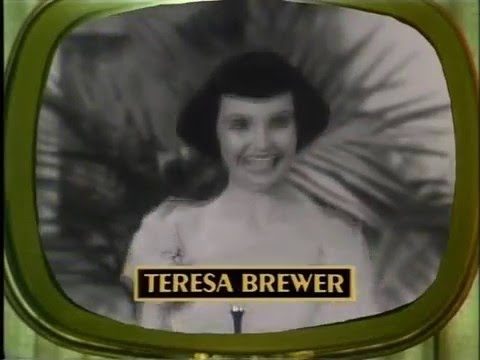
Source
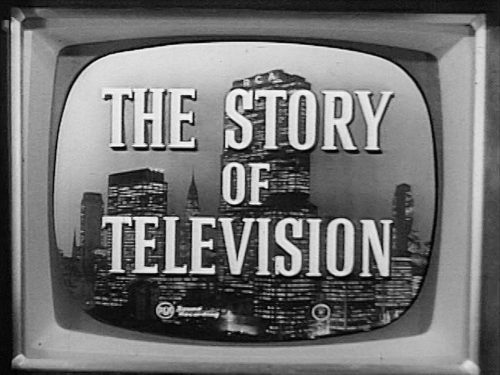

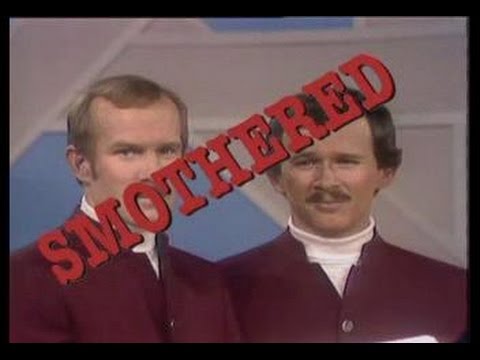
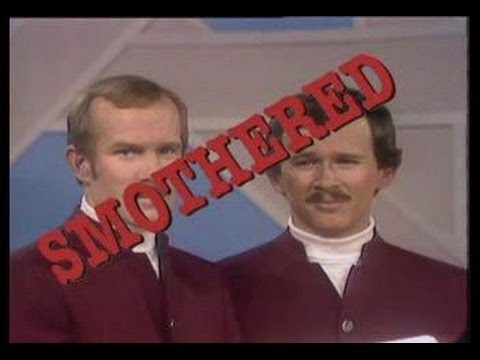
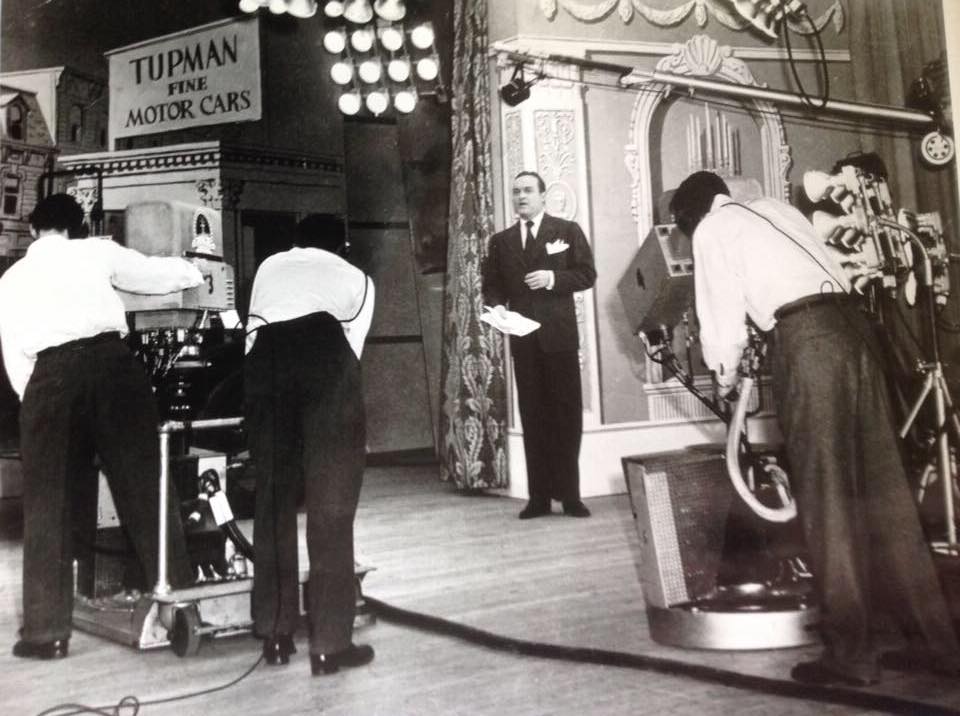

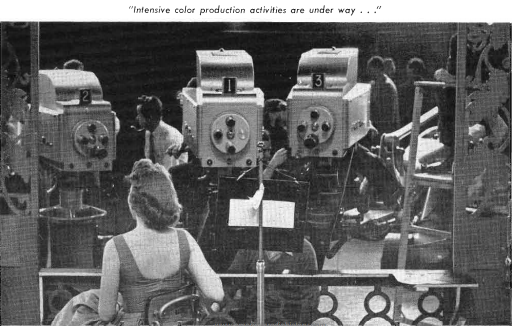
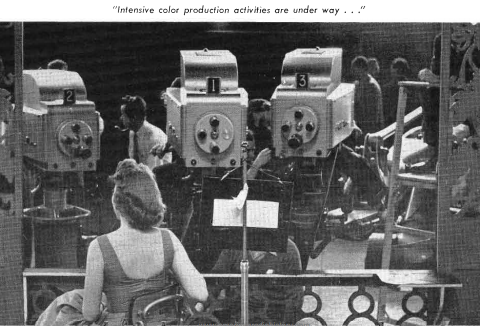
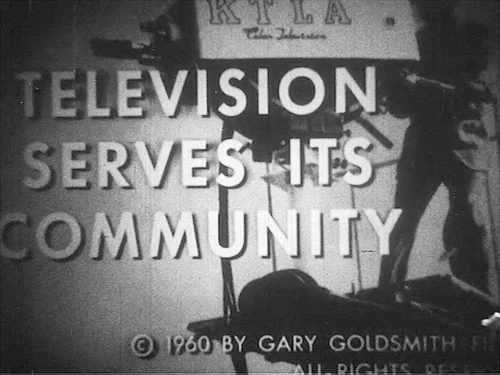
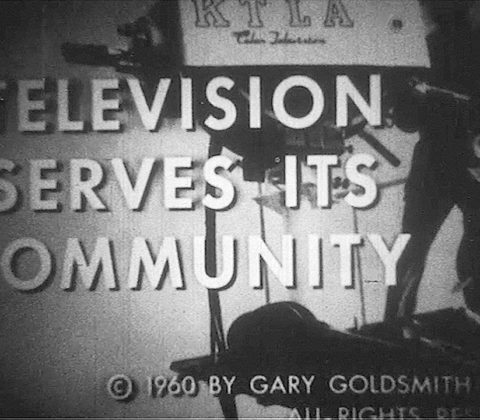




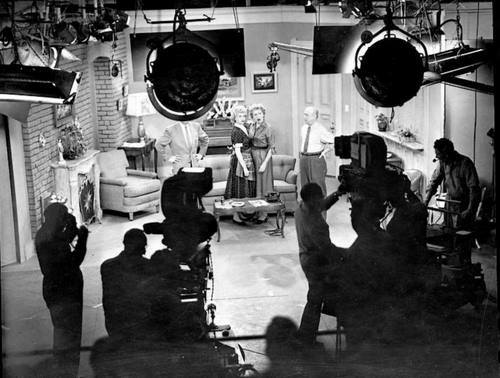

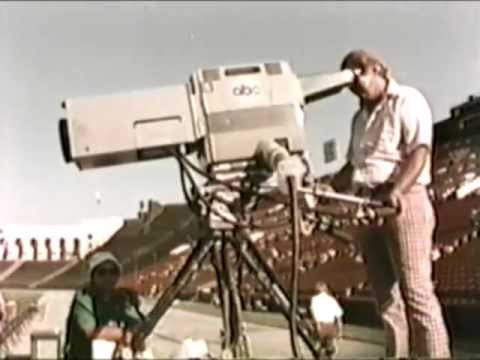

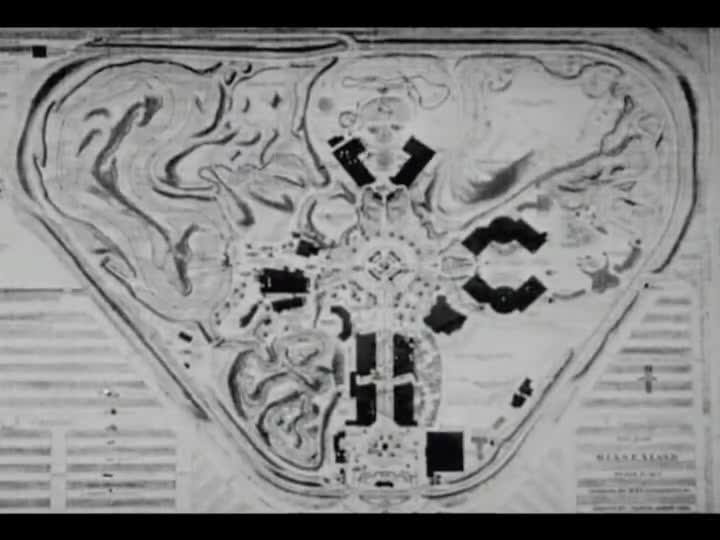

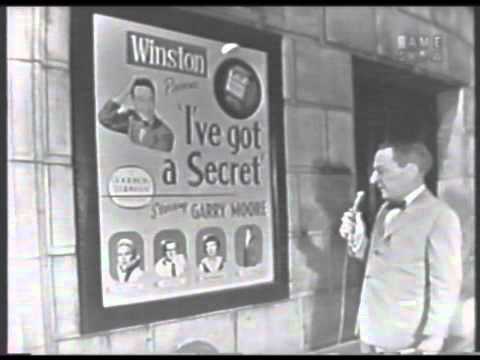

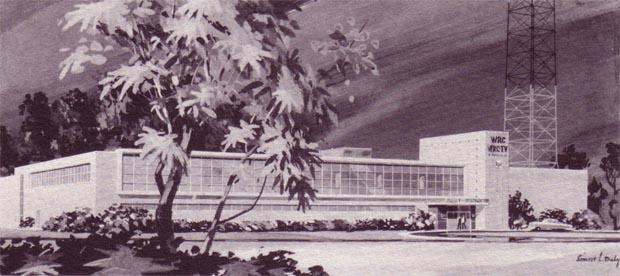
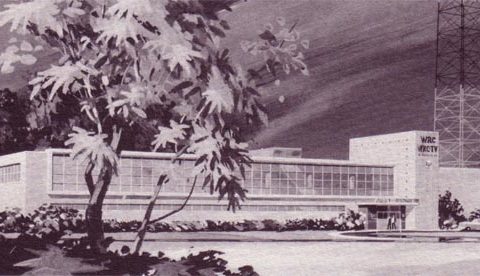
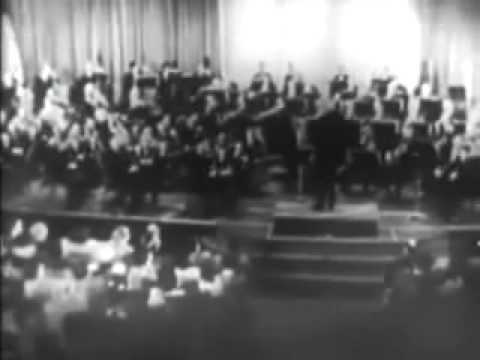

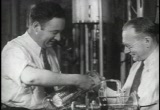



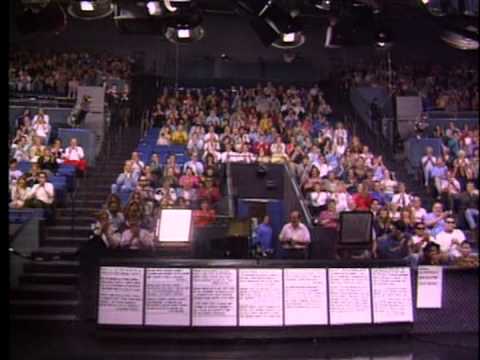

Posts in Category: Viewseum


FIRST EVER VIDEO RECORDING…September 20, 1927? YES!
On January 7, 2019
- TV History, Viewseum
FIRST EVER VIDEO RECORDING…September 20, 1927? YES!
Until yesterday, I had never heard of this and found it hard to believe, but here is the amazing proof laid out, fittingly…in 3 video reports.
In the 1996 report (top video), a single disc of the John Logie Baird video record or Phonovision had just been discovered. As you’ll see, no one had ever seen it, because even Baird had not created a way to play it back, so another Scotsman had to build a way to see it, which is covered there too.
The images were from 1933 and showed The Paramount Astoria dancing girls, shot with a horizontal 30 scan line mechanical system. In the 1998 story (bottom video), 11 more Baird discs have been found, with the earliest dated September 20, 1927. This report includes bits from those newly discovered discs, and at the end there is interesting archival film of Alexandra Palace being made ready for the tests of the competing Baird mechanical system, and Marconi-EMI’s new electronic system.
For more, here is the site of the man that built the playback machine with a great deal more on Phonovision. http://www.tvdawn.com/earliest-tv/phonovision-experiments-1927-28/
You learn something new every day, and after all…isn’t that what life is all about? -Bobby Ellerbee
April 9, 1950…First Bob Hope TV Special, NBC New Amsterdam Theater
On April 9, 2017
- Viewseum
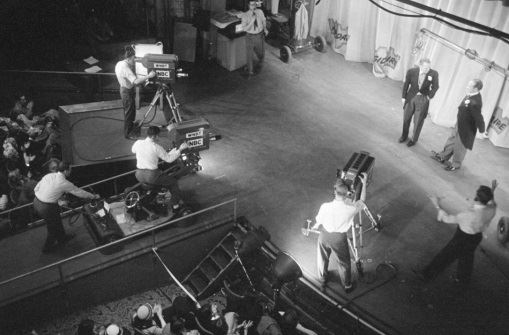
On this day in 1950, NBC Radio star Bob Hope was lured to television by Frigidaire as he hosted his first ever special. The 90 minute show was done live from The New Amsterdam Theater on 42nd Street, just weeks after WOR TV had left the facility to move into their new multimillion dollar building at West 67th Street. Here are two shots of the stage and the control room located under the stage while still a WOR studio.

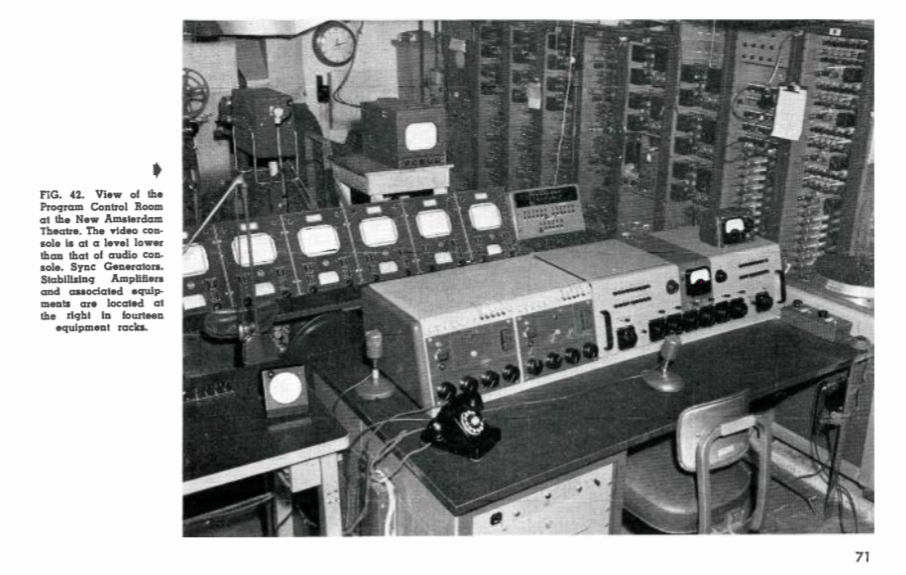
The images above are from pages 70 and 71 of this rare article on WOR’s new studios, and show us the stage and control room under it they left for NBC to lease.
Unbelievably, this show almost did not go on! For two reasons! First we’ll look at the more urgent problem. This was a live NBC remote from The New Amsterdam Theater, scheduled to air from 5:30-7:00 Eastern. Tensions in the air between the unions were so thick you could cut it with a knife. Renowned NBC Technical Director Heino Ripp was there and the man that made it happen.
With only three days of rehearsal in the theater, things were boiling between the electrical and stagecraft people and NBC’s television people, and it all got started over lighting gels. The lighting people were from Broadway and wanted to wash everything with color, but technically television needed more white light and the NBC people were taking the gels out so the cameras could get better tonal balance. One thing led to another and up till about an hour from show time, it looked like there would be a walkout.
Heino Ripp finally jumped in the middle with the heads of all the unions, explained the problems and after about 10 minutes, calm was restored.
In the months before this though, the problem was with Bob Hope. He was avoiding television as much as possible in early 1950 as he considered radio and motion pictures an “easier racket”. Hope had also declared that “NOBODY could pay him enough money to do a TV show!” Then, the ad agency representing Frigidaire contacted Hope’s agent about doing this special, asking how much did Bob want? Hope snapped, $50,000, figuring that would end it, as no one had ever asked for that much money to appear on one TV show back then.
Instead of saying no, Frigidaire countered with an offer for five specials…$40,000 for the first one, and $37,500 each for the rest. Even Hope couldn’t pass that up, and finally agreed. Once he did the special, he embraced television wholeheartedly, appearing in monthly or semi-monthly specials for NBC in the early years, but continued his weekly radio show until it ended in 1955. Hope paved the way for other radio stars to follow him in the new medium.
The full 90 minute Hope special is included below. Produced by Max Liebman, the show was called “The Star Spangled Revue” and Bob’s guest stars were Dinah Shore, Douglas Fairbanks and Bea Lillie. The first season was April ’50 till April ’51 on a monthly basis and all the shows were done from here.
But…this was not the first time NBC had broadcast from this address! RCA’s first experimental television transmissions were mechanical and began in 1928 on station W2XBS at 7 Van Courtlandt Park. After a move to the RCA Phonovision office at 411 Fifth Avenue, nightly two hour broadcasts from 7 – 9 began March 22, 1929. In 1930, testing was moved to The Roof Garden Theater on the top floor of The New Amsterdam Theater building, transmitting 60 line pictures in the new 2-3 mHz band allocated to television. From 1932-35, this was also the NBC Times Square Radio Theater where the famous “Texaco Fire Chief Show” with Ed Wynn came from. Enjoy and share! -Bobby Ellerbee
April 6, 1948…Oldest Known Howdy Doody Kinescope Footage: Exclusive
On April 6, 2017
- Viewseum

THE ORIGINAL HOWDY PUPPET ON ONE OF THE EARLIEST SHOWS RECORDED!
This kinescope is only 21 minutes long, and most likely was done as a test of the new kinescope system introduced by RCA and Kodak in September 1947. Sometime in April of 1948, the month this was shot, three new RCA TK30 cameras replaced the three big silver RCA A500 Iconoscope cameras in Studio 3H where this was done. This could either be one of the last Iconoscope shows or one of the first Image Orthicon shows. Given the many dub generations this is away from the original, it is hard to tell what cameras may have been in use, but it looks like Iconoscope to me, as the TK30 was more crisp.
The actual date of this show is not known, but is most likely from Tuesday, April 6, 1948, which would be the first Tuesday show after the birth of David Eisenhower on March 31, who’s birth is featured in the newsreel. The baseball score is from a spring training game as the regular season did not start until April 20, 1948.
At this link, you will find the “Early History Of Howdy Doody”, that Burt Dubrow helped me write a couple of years ago, and it is packed with information you will not find anywhere else.
http://eyesofageneration.com/the-early-history-howdy-doody-televisions-first-hit-show/
A few notes to help you “see” the history in this. (1) When the show started, it ran only on Saturday afternoon from 5 till 6, but after about 6 weeks, the show began a Tuesday-Thursday-Saturday schedule from 5 till 6. On the 11th show, Howdy announced he was going to run for President of the Kids of the USA. (2) The show was originally called, “Puppet Playhouse” featuring Frank Paris’ “Toby At The Circus” puppet troupe, and on the first show, which Bob Smith was the host and MC for, there was no Howdy puppet, as there was no time to make him, but Howdy was heard! He was in a desk drawer and to bashful to come out.
I mention these points because the first thing I noticed was the opening title is now “Howdy Doody Time”, which is finally proof that the name changed long before many other sources say it did. It probably happened when the show went to 3 days a week, which would be about the second or third week of February 1948…possibly February 10th or 17th. Also, the Howdy for President banner is up. By the way, this would be the first show of the day, as only a test pattern preceded the show, and when it ended at 6, there was not another show until 7:15, so there was another hour and fifteen minuets of test pattern.
When the show starts, notice not only the look of the first Howdy (built by Frank Pairs), but also how different the voice Bob uses for Howdy is. Remember, the voice was developed for the original “Triple B Ranch” radio character named Elmer, who became Howdy Doody after the kids started calling him that because of his greeting of “Well, howdy doody everybody”.
Notice also that the kids are seated in a way that they can only see Bob and Howdy on the monitors, and not at the desk…since Bob was not a ventriloquist, he moved is lips when he voiced Howdy, so it was best to hide that as much as possible. That kind of set up, with his back to the kids when Howdy was talking, continued for the life of the show.
At 13:45, when they go to what would later become the “peanut gallery” the kids are sitting on two, four seat “horses” which were brought over from the place Howdy was born, “The Triple B Ranch” radio show. It was a kids quiz show and the contestants sat on these glorified sawhorses…when one of the kids got a wrong answer, they were “bucked off” the horse.
At 15:03, there is a really special moment! A clown comes in with peanuts for the kids, which seems to catch Bob off guard as he says “Who you?” and then, recovers after a second or two and says thanks “Robbie”. This is most likely the first time assistant stage manager Robert “Bob” Keeshan (Clarabell) had ever worn anything other than street clothes on the set while handing things to Bob Smith. Before the Clarabell costume, it is known that Director Roger Muir had gone to NBC’s wardrobe department for something to dress Keeshan in, and this classic operatic style clown suit was probably their first try.
Many thanks again to Burt Dubrow for letting us see this rare and historic clip from his collection. I hope you enjoyed this very special few moments with the original Howdy on this, the 69th Anniversay of what would later become America’s first daily television program, and the world’s first daily color television program. It was also the first program to log over 1,000 episodes. Since this is the only place to see this video, please share it! -Bobby Ellerbee


How The First Music Video Package Helped Create “American Bandstand”
On March 18, 2017
- TV History, Viewseum
How The First Music Video Package Helped Create “American Bandstand”
The Snader Telescriptions were not only the first ever music videos…these classic music shorts also played a direct role in the creation of “American Bandstand”!
We’ll get to the Bandstand part after this short fact packed video on the history of the Snader project. It is told by the world’s first VJ, Gene Norman who introduced all the Snader video acts, and Duke Goldstone, who directed them.
If Duke’s name is not familiar, his work is! He also directed the Speedy Alka Seltzer and Green Giant commercials, and many of the early musical variety shows for stars like Liberace, Frankie Lane and even Betty White’s first series, “Life With Elizabeth”.
THE BANDSTAND LINKAGE
If you refer back to my March 5th article on how Howard Hughes broke the Hollywood movie boycott on selling films to television in 1954, you realize that about the only films US stations could get before that were from the UK, and they weren’t really that good to start with. When the price on those British movie package prices went up, WFIL in Philadelphia decided they had had enough and went a different route.
They pulled the plug on their afternoon movie and replaced it with a show called “Parade Of Stars” which was built around the Snader Telescriptions music video package that they got at a very good price. That show started in 1951 and was hosted by the WFIL sports director Tom Moorehead.
In 1952, WFIL radio personality Bob Horn was hired to take over the Stars show. When Horn took over, the station started to let Horn’s radio fans – neighborhood teens, come in and watch him do the TV show and listen to the music, but this was all off camera. Eventually, more kids showed up and even began to dance off camera – but that gave them an idea!
Why not let Horn do what disc jockeys do – play records, and let the kids do what they were already doing – dance, and put it all on camera?
So, on October 2, 1952, Horn and his kids left the Snader package behind and moved from the small Studio C, to the much larger Studio B where a new show called “Bandstand” was born. The show grew and in ’56 when Horn left, he was replaced by Dick Clark.
On August 5, 1957 the show was renamed “American Bandstand” when The American Broadcasting Company took the show nation wide. This was ABC first major building block for their daytime programming.
Just for fun, here is part of the sales pitch clip that was sent to local stations.
Source


RCA’s Version Of Television History: 1956
On February 28, 2017
- TV History, Viewseum
RCA’s Version Of Television History: 1956
You won’t hear David Sarnoff or Vladimir Zworykin mention Filo Farnsworth here, but, this is quite interesting none the less. $50 Million to develop electronic TV and $70 Million to develop color are just a few of the interesting tidbits here. The color discussion starts at around 16:15 and after 20:30, we get to see some great shots of TK41s in action. Enjoy!


The Smothers Brothers…SMOTHERED By CBS
On February 5, 2017
- Viewseum
On February 5, 1967, the Smothers Brothers debuted on CBS and went head to head with the Cartwright brothers on NBC’s Sunday night ratings giant “Bonanza”. To everyone’s (even CBS’s) amazement, in less than a month, they had taken the ratings lead! “The rest” as they say, “is history”…but it was a history that was as unusual as their start. The more successful they became, the more CBS tried to hold them back.
To tell this very important and moving story, here is our friend Maureen Muldaur’s great documentary Smothered from 2002. Tom and Dick tell a lot of the story, but just about everyone involved is here too, including another friend of ours, producer George Sunga. Enjoy and Share! -Bobby Ellerbee


KTLA Anniversary Show
On January 22, 2017
- TV History, Viewseum
MUST SEE HISTORY OF EARLY LOS ANGELES TELEVISION!
KTLA’s 70th Anniversary Is Today! January 22, 1947 – 2017
This amazing video is packed with ultra rare historical footage of not only KTLA, but from the early days of all the Los Angeles television stations!
The show is hosted by Bob Hope, Betty White, Steve Allen, Dinah Shore, Dick Enberg and MANY more! This 40th Anniversary broadcast video even has a very good timeline below, but if you can, make the time to see it ALL!
This is one of the very best historical presentations you will ever see!
Below are minute to minute guides to help you take this all in…it is packed with history!
0:00 Program opening.
1:47 Clips from “The Jazz Singer.” History of the creation of television.
2:25 Early newsreel showing early television makeup.
2:50 Early television broadcasts of KTLA Channel 5.
4:30 Bob Hope talks about early television. Early television broadcasts. Great studio shots of that first day & Hope on camera.
8:06 1936 Olympic broadcasts. Klaus Lansberg, early television man. Station W6XYZ established. Early home shopping program.
10:04 Eddie Resnick, early cameraman talks about his work at the station. Pray Marco was a show similar to the lottery. Mike Stokey’s Pantomime Game Time, a show like pictionary. 1949 first Emmy Awards at Hollywood Athletic Club. Pantomime Quiz won best show.
12:09 Shirley Dinsdale with Judy Splinters (puppet) talks about winning first Emmy for most entertaining personality. Six awards were given at this first Emmy Awards show, and four went to KTLA. List of stations and when they began.
13:37 The Marshall of Gunsight Pass, early Western show. Clip from 1949. Al Jarvis, former radio disk jockey, had talk show with Betty White. Yer Ole Buddy, early comedy show. Clip from 1948. Bud Stefan talks about the show. Bill Welch did early sports shows. Talks about how many lights were needed in the studio due to the low sensitivity of the cameras.
18:07 Music and variety shows. Steve Allen talks about variety shows and venues in Santa Monica. He shot the shows that took place there.
25:10 Frosty Frolics, an ice skating show from Pasadena with host Stan Chambridge. Musical Adventure with Korla Pandit clip. Pandit talks about the show. Larry Finley talks about program he did called “Sell-a-thon.”
30:42 The Johnny Otis Show from 1960. Steve Allen talks about clip from 1962 from his show that involved a lot of pie throwing. Show called Melody Ranch with Gene Autry. Autry talks about how he changed the station after he bought it. Liberace show from 1951, Carson’s Cellar from 1952.
34:57 Early KTLA commercials.
36:03 Sponsor info.
36:17 Dinah Shore show from 1951 with Chevrolet ad. Shore talks about her early television days. Segment on “reality shows.” 1949 clip from City at Night. Ken Graue talks about the show, which was completely improvised and live. John Polich supervised the show; he talks about it.
39:05 Handy Hints with Dick Garten and Dorothy Gardiner. Hollywood Reel, which looked at stars. Clips of Barbara Bel Geddes and Ronald Reagan. Shore talks about early videotape programs, such as Emergency Ward and the Jack LaLanne show, an exercise show from 1958. LaLanne talks about the early resistance to his program. He claims to be the first to get athletes and women to work out with weights. Seven Keys, an early game show from 1960. Jack Narz talks about the show.
44:19 Adventures in Hypnotism, a live program where people get hypnotized. Emile Franchel was the host/hypnotist. Ralph Story’s Los Angeles from 1965, a public service program. Hal Style’s Help Thy Neighbor. The Baxters, hosted by Steve Edwards, clip from 1979.
47:30 Scared Straight, a documentary hosted by Peter Falk where juvenile delinquents are confronted by prisoners, from 1978.
48:30 Stan Freeberg talks about children’s programs. Time for Beany, puppet show from 1949. Daws Butler, one of the puppeteers, talks about the show. Sandy Dreams, first show with written script. Space Patrol from 1950. Tim McCoy show with Native American actor, Iron Eyes Cody. Playcrafters Club from 1954. Ding Dong School from 1960.
55:22 Cartoon Express with Engineer Bill. Bill Stula talks about the show. John Rovick talks about his role as Sheriff John. Shebang! With Casey Kasem. Clip of The Doors on the show.
1:03:55 Freeberg claims he got a letter saying that Time for Beanie was Albert Einstein’s favorite show.
1:04:40 Commercial for Calvin Klein’s Obsession for men cologne. Commercial for Toyota dealers of Southern California. Ad for Disneyland. Ad for Derma-Safe laundry detergent.
1:06:51 Hal Fishman news at ten story promo. Ad for Disneyland Circus Fantasy 87 and Carl’s Jr. Ad for Columbia Savings. Ad for British Airways. Ad for Renault Medallion.
1:09:10 Section on sports with Dick Enberg at the Olympic Auditorium. Destruction Derby, Roller Derby, Moto Polo clips. Bowling for Dollars show clip from 1970. Wrestling clips from 1950. Sports Stars on TV. The Tablehopper clip from 1959. Miss Universe Pageant clip from 1956.
1:18:30 American Express ad. Ad for Ralph’s supermarket. Ad for Pan Am airlines. Ad for Dreyer’s Grand Ice Cream. Ad for Campbell’s soups. Ad for Southern California Hyundai Dealers. Ad for Jack in the Box restaurants.
1:22:22 Hal Fishman at atomic test site in Nevada talks about news coverage. Footage of TV coverage of the test. Klaus Landsberg set up the coverage. Clip from War of the Collosal Beast. Stan Chambers, news reporter for over 40 years. Cleve Lansberg talks about watching his father direct television shows. Various newscasters relate anecdotes.
1:36:48 George Putnam talked about the early days at KTLA. Other newscasters talk about the early days of television.
1:38:53 Section on weathermen. Jim Hawthorne talks about the first weather broadcasts. Dr. George Fishbeck talks about his forecasts. Pat Sajak talks about being a substitute weatherman, which eventually led to his being asked to host the Wheel of Fortune show.
1:41:52 Ad for Oppenheimer Mutual Funds. Ad for Renault Medallion. Ad for Blue Cross of California. Geraldo Rivera does ad for show called Innocence Lost. Sponsor info. Ad for American Express. Ad for Ralph’s supermarket.
1:46:24 Clip from “The Jazz Singer.” Information about KTLA’s current situation. They were just purchased by the Tribune Corporation. There is a list of events that they plan to cover and a promo for the night time news. Shots of old studios and what they are being used for now. Montage of shots from early programs with Simon and Garfunkel song.
1:51:33 Tape ends abruptly.


January 13, 1957…Dinah And The Colonial Theater TK40 Cameras
On January 13, 2017
- Viewseum
January 13, 1957…Dinah And The Colonial Theater TK40 Cameras
The Colonial Theater was NBC’s first color facility. A few seconds after this video’s start point, the first camera we see is the TK40 in it’s original configuration…notice there are no vents on the viewfinder housing. The Colonial was the only NBC theater with TK40s and these are the original four pre production/prototype cameras that were delivered in November of 1952. Production in Camden would not start till April of 1954 with only 25 TK40s built before a quick switch to the TK41 later that year.
Once the crane camera comes into view, notice it has a vented viewfinder housing, but it is still a TK40. My long study of The Colonial’s cameras has always made me wonder why they left one TK40 with the original un-vented VF cover. RCA supplied the updated, vented cover to TK40 owners once the TK41s went into production in 1954.
Usually, Dinah’s show came from Burbank, but for some reason, they are in NY for a couple of weeks. Dinah’s one hour show ran on NBC from October of ’56 till May of ’63 and was always in color. Bob Banner was the producer. -Bobby Ellerbee


January 1, 1961…Behind The Scenes At KTLA & The Rose Parade
On January 1, 2017
- Viewseum
January 1, 1961…Behind The Scenes At KTLA & The Rose Parade
The events in this great fourteen minute clip, were all filmed in the last week of December, 1960, and lead up to the air date of Sunday, January 1, 1961.
We’ll see how on this day, KTLA produced a Sunday news show at 1 PM, a live musical show at 2, and at 3, a color-cast of the Rose Parade.
This is full of RCA TK10s and TK41s, familiar faces like announcer Tom Kennedy, newsman Clete Roberts, cameraman Dick Watson, great control room and mobile unit shots and more. If the director looks familiar, you may have seen him in NBC’s Studio 3H, where electronic TV began. His name is Bill States and he was one of TV’s first technical directors and later worked closely with the legendary Fred Coe before he moved to the west coast.
I hope the KTLA vets among us will point out faces and places. Although we don’t get inside the color mobile unit, or the Telecopter (America’s first), built by Klaus Landsberg and John Silva, at least we get to see them in action. -Bobby Ellerbee


December 31, 1955, “Your Hit Parade” With NBC Studio 8H Shots
On December 31, 2016
- Viewseum
December 31, 1955, “Your Hit Parade” With NBC Studio 8H Shots
Starting at the 2 minute mark, the first number is sung by “the floor manager” with cast, crew and cameras everywhere in NBC’s Studio 8H, 61 years ago today.
I was surprised to see the cameraman on the Houston Fearless Panoram dolly spin the boom lift/lower wheel…he gave it a really good spin and even after he took his hand off, the boom kept going down as the wheel continued to spin. Even though I have a Panoram dolly, I never knew that the action was so free. as the action on mine is quite tight. Happy New Year! -Bobby Ellerbee


A Guided Tour Of Some Of Television’s Early Studios…
On October 20, 2016
- TV History, Viewseum
A Guided Tour Of Some Of Television’s Early Studios…
You may have seen this before, but may not have known the historic places you were seeing. Today, we will remedy that with a guided tour of this film, so let’s get started.
At 1:58 we are in GE’s WRGB in Schenectady NY. RCA began as a part of GE and early on, this facility was the GE experimental television center.
At 2:36 we see in the foreground at WRGB a three wheel camera “trolley”. It survived and is now on display at the Schenectady Museum along with two of these camera.
At 3:00 we see television’s first ever Mobile Unit…the twin van RCA creation with the camera control in one and the transmission gear in the other. These 38 foot units were built in 1938.
At 3:20 an RCA Field Iconoscope camera is being mounted and just after that, we are in the camera control van.
At 3:55 we see an RCA Type 1840 Orthicon camera in action. This is the first version of this camera we saw here yesterday.
At 4:04 we enter hallowed ground. This is NBC Studio 5F which was home to the first ever television film chain with a 35 and 16MM capacity. It was built in 1936, just after Studio 3H was converted from radio to television.
At 4:15 we get a rare look as CBS Studio 41…the largest of the two production studios at their Grand Central Terminal location. The cameras are the RCA A500 Iconoscope models. Studio 42 was a bit smaller.
At 5:06 we see the first ever animated television ID. I think the voice is Ben Grauer. This was rolled from Studio 5F.
At 5:30 we see the NBC antenna atop the Empire State Building
At 5:44 we are back inside WRGB where we get a look inside one of the GE Iconoscope cameras.
At 8:14 we are inside the RCA plant in Camden.
At 8:40 we may be inside the RCA Labs in Princeton where much of the early television testing was done.
Enjoy and share! -Bobby Ellerbee
A U.S. Armed Forces report about the future of television in 1945. Footage from this subject is available for licensing from www.globalimageworks.com
“I Love Lucy” RARE On The Set Video
On October 15, 2016
- TV History, Viewseum
This is a close to “being there” as we’ll ever get. This clip, from an “I Love Lucy” movie, takes us inside the Desilu Playhouse and gives us an ultra rare glimpse of what it was like on the set of one of television’s most famous shows.
The location is General Services Studios, Studio 2, which in 1952 got its own audience entrance at 6633 Romaine Street. The sign at the new entrance invited you into the Desilu Playhouse. The first few years of the show were done here.
As we have confirmed with other sources, this was pretty much the same warm up that Desi used for the entire six years, including the camera push in. Enjoy and share! -Bobby Ellerbee


Covering College Football…ABC Sports, October 4, 1975
On October 8, 2016
- TV History, Viewseum
Covering College Football…ABC Sports, October 4, 1975
This is the best ever look at how 60 men brought 30 million viewers these great games every Saturday. “Second’s To Play” is presented in it’s original 30 minute format.
This is the most extensive look you’ll ever get of how ABC Sports crews covered the games in this era. Norelco PC 70s are in use, and our friend Don “Peaches” Langford is on the sidelines with the 49 pound Norelco PCP 90 hand held. Enjoy and SHARE! -Bobby Ellerbee
July 17, 1955…Behind The Scenes With ABC At Disneyland Opening
On July 17, 2016
- TV History, Viewseum
July 17, 1955…Behind The Scenes With ABC At Disneyland Opening
This is the only place you can see this rare 14 minute video of ABC’s preparations for the 29 camera live remote, of the 90 minute opening ceremony show at Disneyland. 61 years ago today, what was then television’s largest remote took place at the Disneyland Grand Opening. Here is the behind the scenes film produced by ABC to commemorate the massive 29 camera, live broadcast.
The video above ends with the narrator saying “And here’s the show”. Below is the full 90 minute program, hosted by Art Linkletter, Walt Disney and many more famous faces.


June 17, 1959…”I’ve Got A Secret”; Tour Of CBS Studio 59
On June 17, 2016
- TV History, Viewseum
June 17, 1959…”I’ve Got A Secret”; Tour Of CBS Studio 59
To celebrate their seventh anniversary on the air, all from Studio 59, “I’ve Got A Secret” host Garry Moore takes us on a tour of The Mansfield Theater, better known to us as CBS Studio 59 at 256 West 47th Street. As you’ll see, CBS Studio 62, The Biltmore Theater is across the street at 261 West 47th Street.
Below is a partial list of CBS shows from this studio. Enjoy and share! -Bobby Ellerbee
Play Your Hunch (1958)
The Burns & Allen Show (1950-51) first 6 shows
What’s My Line? (1951-60)
It’s News to Me (1951-54)
I’ve Got A Secret (1952-60)
Masquerade Party (1959)
To Tell The Truth (1959)
You’re On Your Own (1956)
G.E. College Bowl (1959)
Garry Moore daytime show (1950-1958)
Of All Things with Faye Emerson (1956)
Who’s Whose (1951)
What’s In A Word (1954)
Two In Love (1954)
Ted Mack & the Original Amateur Hour (1959)
Ship Ahoy (WCBS) (1951)
Take a Guess (1953)
Strike It Rich (1951)
Steve Allen (1950-1952)
The Show Goes On (1951)
Sam Levenson (1951-1952)
Guess Again (1951)
It’s Fun to Know (1951)
The Jimmy Dean Show (1959)
Live Like a Millionaire (1951-1952)
Anyone Can Win (1953)
Down You Go (1955)
Frank Sinatra (1950)
Name That Tune (1954-1959)
Robert Q. Lewis (1954)
Russ Morgan


Television’s Oldest Surviving Color Videotape…May 22, 1958
On May 22, 2016
- TV History, Viewseum
Television’s Oldest Surviving Color Videotape…May 22, 1958
This is the dedication of NBC’s new studios for WRC Radio and TV, it’s owned and operated station in Washington DC. President Eisenhower is on hand for the occasion, as are David and Robert Sarnoff, and many distinguished guests.
NBC’s David Brinkley narrates much of the opening minutes which gives us a good look at Studio A, while Eisenhower is getting a tour of the engineering facilities from Sarnoff.
As you’ll see, mostly from 4:28 – 6:00 and again from 9:30 – 10:30, there are black and white cameras in the studio alongside two new RCA TK41s. Their four black and white cameras are in use mostly to cover the arrival and dignitaries, but when the speakers start, their job is done and the TK41s take over.
At 14:50, Robert Sarnoff pushes a big button to make the switch from b/w to color, which is when the color burst is added to the signal. This rare Quad tape restoration to D-2 digital tape was done by Ed Reitan, Don Kent, and Dan Einstein in July of 2006.
For the behind the scenes story on the restoration and some interesting photos, go to this link…
http://www.quadvideotapegroup.com/EiesnhowerQuadRestoration.htm
Enjoy and share! -Bobby Ellerbee


A Brief History Of The Kinescope…Historic Images & The Machine
On April 21, 2016
- TV History, Viewseum
A Brief History Of The Kinescope…Historic Images & The Machine
The first official use of the RCA Kinescope process was the week of June 21, 1948, at the Republican National Convention in Philadelphia. NBC affiliates not connected via coaxial cable or microwave would would receive the film, the next day via Rail Express.
As you will see in this video from NBC’s KNBH in Hollywood, testing had been done as early as 1938. I think this report was probably done in early 1949.
Also seen here, the kine recordings of the first broadcast using the RCA TK30 Image Orthicon cameras in June, 1946 at the Joe Lewis – Billy Conn rematch at Yankee Stadium. Near the end, we’ll get a look at RCA’s latest Kine in action. Videotape couldn’t come soon enough. – Bobby Ellerbee


A Guided Tour Of Television’s First Studio…NBC’s 3H, 1939
On March 31, 2016
- TV History, Viewseum
A Guided Tour Of Television’s First Studio…NBC’s 3H, 1939
The things I have learned from NBC vets, and visits to 30 Rock, allow us to see this old video with new eyes. This is an RCA promotional film from 1939 designed to introduce television to the public and would have been broadcast on NBC during the Worlds Fair and shown in the RCA Exhibit at the fair and the RCA Exhibition Hall on 49th Street, next to 30 Rockefeller Plaza.
Before we start, here is some information that will help you get your bearings. This is something I learned while standing in the space that once was Studio 3H, but is now 3K.
Now, you enter the third floor studios from the main hallway in the building’s interior, but when this film was made, that hallway was mostly for tour groups. Engineers and talent used a different interior hallway (that was on the backside of the studios and against the building’s walls), to avoid the crowds. So, when you see the control room window, it will be on the back wall and is accessed from the fourth floor. The orchestra seen here will be directly under the visitor’s observation window, which faced the 4H control room window. The visitor/tour group window was also on the fourth floor which was accessed from the main hallways used for access today. If it seems confusing, I think seeing the video will clarify that.
At :49 we are at the RCA Labs in Princeton NJ where tube and camera tests are underway.
At 1:49 we see the antenna atop The Empire State Building and just after that, we see the transmitter room a few floors under it.
At 2:25 we see the new mobile units leaving 30 Rock and arriving at a horse race track for a live broadcast. This is a great sequence and gives us a good look at these trucks.
At 4:19 we finally enter Studio 3H. Watch closely! Notice the camera on the left has its top flipped up and the cameraman is making some internal adjustments. Notice on the right…the camera is rising. These pedestals had an internal electric motor to ped up and down. The cameraman with the rising pedestal is NBC’s first…Albert Protzman.
At 4:35 we see cameraman Don Pike on the Houston Fearless Panoram dolly. Don was NBC’s second cameraman.
At 4:44 we see up top, the visitor’s observation window on the fourth floor. This is the wall that opens into the main interior hallway that we use now. The smaller window below the 4H control room was the original 3H radio control room. Opposite this, at the main hallway end of the studio was a storage room which became a rear screen projection room.
At 4:51 we see the control room window. This is on the fourth floor and accessed by hallways on the back of the studios, against the exterior walls of the building.
At 5:04 the cameraman on the left is NBC’s great TD, Heino Ripp, on the right is NBC’s second cameraman Don Pike.
At 5:15 we see NBC’s first cameraman, Albert Protzman, manning the title card camera.
At 5:30, the broadcast starts. If the center camera were to tilt all the way up, we would see the visitor observation window. Behind the orchastra, would be the door to the 3rd floor hallway in today’s configuration.
At 5:57, notice the big tally lights under the camera lens (left and right of the cable). They are green. Before there were red tally lights, they used the green tally color to denote which camera was on the air.
At 6:17, notice the man on the far right. He is the director and as of late, I have identified him as William States who went on to be a technical director for the great Fred Coe. States later moved to Los Angeles and was a director at KTLA and can be seen there at this link https://eyesofageneration.com/january-1-1961-behind-the-scenes-at-ktla-the-rose-parade/
At 6:48 we get a look over the shoulder of the people in the control room looking out on the studio.
As the feature approaches the end, we go to the control room for a while. At the back desk, the director is in the foreground, closest to us. The woman is what was then called the production director who was mostly concerned with the script, runtime, cues and talent…today that would be an associate director. The man on the far end is what was then called the video engineer and is doing the switching…today we call this the technical director. At the front desk is the video man (closest) who is shading the cameras and on his right is the audio man.
Enjoy and share! -Bobby Ellerbee


Rare Classic! Ed Sullivan Taping Holiday On Ice With TK41s
On February 20, 2015
- TV History, Viewseum
Rare Classic! Ed Sullivan Taping Holiday On Ice With TK41s
Here is some great home movie footage of the taping at Madison Square Gardens in 1967.
I notice Producer Bob Precht and Floor Manager Eddie Brinkmann are wearing different clothes in later shots, but I think this was all shot in one day. They may have changed after rehearsal and cut ins when an audience was brought in. I understand part of the budget included spiked golf shoes for the crew so they could walk on the ice without slipping.
Although the RCA TK41s have CBS Color logos, they are not from a CBS mobile unit, as there were no CBS owned color mobile units before the Norelco cameras came along. The cameras are most likely from a truck rented from either WOR or Video Tape Center.
I see Director Tim Kiley at the front (blue shirt white pants) of this and I think I see AD John Moffitt too. Producer Bob Precht is the tall blond man (red shirt blue pants). At around 4:20, there is a very familiar looking man in glasses. Do you know who that is? I think he is a comedian, but I can’t call his name. Enjoy and share. -Bobby Ellerbee


The Final Days Of ‘Tonight’ With Johnny Carson…
On February 11, 2015
- TV History, Viewseum
The Final Days Of ‘Tonight’ With Johnny Carson…
Since so many of you enjoyed our trip to Burbank yesterday, I though we would take another day there.
This clip ran in Johnny’s last week on the air. I have seen a version of this from the show and in his intro, he said what we all know to be true…that he allowed very little coverage of the backstage elements of the show, which makes this one of those rare times. The studio is Burbank’s Studio 1.
I think this ran on May 19th, just four days before the last broadcast on May 22, 1992. Enjoy and share! – Bobby Ellerbee